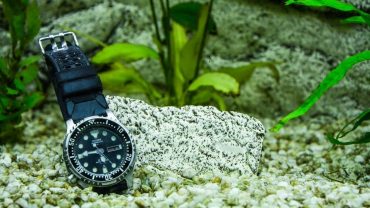How To Care For Pictus Catfish: A Simple Guide
Pictus catfish are found naturally in the warm waters of Amazon and Orinoco rivers. Taking care of it involves replicating its natural tropical habitat as much as possible.
That includes warm and soft water, a fairly neutral pH, and plenty of nooks to hide in.
In this guide, we tell you everything you need to know about how to care for pictus catfish. Bottomline: they do require a bit of work to keep healthy, but they are not too delicate either.
Are Pictus Catfish Hard To Keep?
Keeping pictus catfish ranks somewhere between easy and medium in terms of difficulty. They are not extra-sensitive, but you need a rigorous water quality maintenance routine to keep them healthy.
One of the biggest challenges with keeping pictus catfish is that they don’t have scales, so they are more likely to be affected by poor water quality.
You need to regularly check water quality to make sure all parameters are within the right range.
Pictus catfish are especially affected by high levels of ammonia and nitrates. It doesn’t help that they produce a lot of waste, which contains ammonia and nitrates.
You have to do weekly water changes to maintain water quality.
Proper filtration is also essential. Combining multiple forms of filtration (chemical, biological and mechanical) ensures a safe environment for your pictus catfish.
Something else to note is that pictus catfish are voracious feeders. They need daily feeding. If they are hungry, they’ll hunt and eat smaller fish in the aquarium.
Luckily, they don’t need a special diet. They are omnivorous, and thus eat a wide range of foods. Catfish pellets or tablets are perfect. Supplement them with vegetables and meat pieces from your kitchen.
How Many Gallons Of Water Does A Pictus Catfish Need?
In an aquarium, Pictus catfish grow to only about 5-6 inches. But because they are highly active swimmers, they need lots of space. Watch the video below to see just how fast they zoom around in the tank.
The minimum recommended size for a single pictus catfish is 55 gallons. If you plan to keep a shoal of about 5 catfish, you’ll need a minimum 150-gallon tank.
You can keep a shoal in a 50-55 gallon aquarium, but the fish will likely not thrive. The lack of swimming space will stress them out.
Overcrowding also increases the risk of diseases. Not to mention that you’ll need to be even more rigorous in maintaining water quality.
What Temperature Do Pictus Catfish Like?
Because they are tropical fish, pictus catfish thrive in warm water between 72 and 78 degrees Fahrenheit (22.2C – 25.5C).
This closely replicates the temperature of their natural habitat.
Do Pictus Catfish Need a Heater?
Yes, you’ll probably need a heater to keep your aquarium at the right temperature for the pictus catfish. In most places, ambient room temperature will not be enough to keep the water warm.
For a 55-gallon tank, a 200W-300W submersible heater will do. Make sure you also get a thermometer so that you can monitor the water temperature in the tank.
What’s the Best Water pH and Hardness for Pictus Catfish?
In addition to temperature, two other important aquarium parameters to watch out for are pH and water hardness.
Pictus catfish thrive in fairly neutral pH water between 7.0 and 7.5. Since pictus catfish produce a lot of ammonia-containing waste, which can affect pH, you need to regularly check the water’s pH and make sure the filters are working properly.
As for hardness, the natural habitat for pictus catfish has soft water. So you’ll also need soft water in your aquarium. The ideal range is 50 to 100 mg/L.
Read also: How To Breed Pictus Catfish?
Do Pictus Catfish Need a Bubbler?
As long as your tank has excellent filtration and adequate agitation, you probably don’t need an air pump and bubbler (also called an air stone).
But with pictus catfish, it’s always best to go overboard with water quality rather than risk doing too little and getting the fish sick and stressed.
Adding an air pump keeps the water clean and fresh, and ensures the fish have plenty of oxygen. Do not use an air pump on its own to avoid overwhelming the fish.
Combine an air pump with a bubbler to provide the same gentle flow of air pictus catfish get in their natural river habitat.




